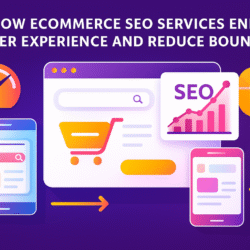In today’s hyper-competitive landscape, the contact center stands as a critical touchpoint, often the primary determinant of customer loyalty and brand perception. Yet, managing these complex ecosystems effectively remains a monumental challenge. High agent turnover, fluctuating customer sentiment, intricate processes, and the sheer volume of interactions can make optimizing performance feel like navigating a labyrinth blindfolded.
Enter Contact Center Analytics Software – a game-changer that transforms raw data into actionable insights, revolutionizing how businesses approach quality management and process optimization. Far beyond basic reporting, this sophisticated technology leverages AI and machine learning to provide an unparalleled understanding of every customer interaction and the operational backbone supporting it.
The Evolution of Quality Management: From Manual Reviews to Intelligent Insights
For decades, quality management (QM) in call centers was largely a manual, labor-intensive, and inherently limited process. Supervisors would randomly select a tiny fraction of calls (often 2-5%), score them against a checklist, and provide feedback. This approach, while well-intentioned, suffered from several critical flaws:
- Limited Sample Size: A small sample cannot accurately represent the performance of an agent, let alone an entire team or the overall customer experience.
- Subjectivity: Scoring could vary significantly between evaluators, leading to inconsistent feedback and agent frustration.
- Reactive Not Proactive: Issues were discovered after they had already impacted customers, making it difficult to intervene in real-time or prevent recurrence.
- Time-Consuming: The sheer effort required to listen, score, and provide feedback left little room for strategic analysis or proactive coaching.
Contact Center Analytics Software acts as a powerful Quality Management Tool for call center operations, addressing these challenges head-on by offering:
- 100% Interaction Coverage: Imagine evaluating every single interaction – calls, chats, emails, social media messages. Analytics software makes this possible by transcribing and analyzing all interactions, regardless of volume. This unparalleled visibility provides a true, unbiased picture of performance.
- Automated Scoring and Evaluation: Leveraging Speech and Text Analytics, the software can automatically score interactions against predefined criteria such as adherence to scripts, compliance with regulations, use of empathy statements, problem-solving effectiveness, and resolution. This eliminates human bias and ensures consistent, objective evaluation.
- Root Cause Analysis: Beyond simply identifying what an agent did or said, analytics can pinpoint the why. Is an agent struggling with a particular product feature? Are they missing key information due to a gap in training? Is a system issue causing them to deviate from the script? By correlating interaction data with agent performance metrics, the software uncovers the underlying causes of both positive and negative outcomes.
- Sentiment Analysis: Understanding the emotional tone of both the customer and the agent is crucial. Analytics can detect frustration, confusion, satisfaction, and empathy, allowing managers to identify interactions that require immediate attention or agents who need coaching on soft skills.
- Proactive Issue Detection: The software identifies emerging trends, such as a sudden spike in complaints about a specific product or service, or an increase in calls related to a recent marketing campaign. This allows businesses to address issues before they escalate into widespread customer dissatisfaction.
- Personalized Coaching and Training: Instead of generic feedback, analytics provides agents with specific, data-driven insights into their performance. Managers can pinpoint exact interactions or phrases where an agent excelled or struggled, enabling highly targeted and effective coaching sessions that lead to faster skill improvement and higher agent morale.
- Compliance Monitoring: In regulated industries, ensuring agents adhere to specific guidelines is paramount. Analytics can automatically flag non-compliant language, unapproved offers, or missed disclosures, significantly reducing risk and safeguarding the business.
By transforming quality management from a retrospective, sample-based activity into a real-time, comprehensive, and data-driven process, Contact Center Analytics Software empowers managers to nurture agents more effectively, identify systemic issues, and ultimately deliver a consistently superior customer experience.
Optimizing Operations: Streamlining the Customer Journey and Beyond
Beyond agent performance, a contact center’s efficiency hinges on well-oiled processes. From how a customer navigates the IVR to the tools an agent uses, every step contributes to or detracts from the overall experience. This is where call center process management benefits immensely from analytics.
Contact Center Analytics Software provides the visibility needed to dissect and optimize every facet of the operational workflow:
- Identifying Bottlenecks and Friction Points: Analytics can uncover where customers get stuck. Are hold times excessively long for specific departments? Are customers being transferred multiple times for the same issue? Are repeat calls for the same query indicating a lack of first-contact resolution? By analyzing interaction paths, transfer rates, and call reasons, the software spotlights inefficiencies that prolong resolution times and frustrate customers.
- Streamlining Customer Journeys (Omnichannel View): Modern customers interact across multiple channels – phone, chat, email, social media. Analytics tools stitch together these fragmented interactions to create a holistic view of the customer journey. This reveals pain points in channel transitions, identifies where self-service options fail, and helps design a seamless, intuitive omnichannel experience.
- Optimizing Self-Service and IVR Deflection: Many customer queries can be resolved without agent intervention. Analytics helps evaluate the effectiveness of IVR menus, chatbots, and FAQ sections. By understanding what customers are asking and where they abandon self-service attempts, businesses can refine these channels to increase deflection rates and reduce call volumes to agents.
- Improving First Contact Resolution (FCR) and Average Handle Time (AHT): These are two of the most critical KPIs for contact centers. Analytics helps reduce AHT by identifying process redundancies, agent knowledge gaps, or inefficient desktop tools. It improves FCR by flagging recurring issues, equipping agents with better resources, and even suggesting next-best-actions in real-time.
- Resource Allocation and Workforce Optimization (WFO): By analyzing historical data and predicting future interaction volumes and types, analytics integrates seamlessly with WFO systems. This enables more accurate forecasting, optimized agent scheduling, and skill-based routing, ensuring the right agents are available at the right time to handle specific customer needs.
- Agent Desktop Optimization: The tools and applications agents use can significantly impact their efficiency. Analytics can monitor agent activity, identifying unnecessary clicks, prolonged search times, or frequently used workarounds. This data informs improvements to the agent desktop, making information more accessible and workflows more intuitive.
- Proactive System and Product Enhancements: Beyond agent or process issues, analytics can highlight underlying system glitches, product design flaws, or confusing marketing messages that generate high call volumes. This enterprise-wide feedback loop is invaluable for continuous improvement across the entire organization.
The ultimate goal of leveraging Contact Center Analytics Software for process optimization is to create a more agile, efficient, and customer-centric operation. It moves businesses away from reactive problem-solving to proactive, data-driven strategy, leading to faster resolution times, lower operational costs, and, most importantly, happier customers.
Beyond the Hype: Implementing Analytics for Tangible Results
Adopting Contact Center Analytics Software isn’t just about investing in technology; it’s about embracing a data-driven culture. To maximize its impact, organizations should:
- Define Clear Objectives: What specific QM or process challenges are you trying to solve?
- Integrate Data Sources: Pull data from all relevant systems – CRM, WFM, IVR, etc. – for a complete picture.
- Start Small, Scale Up: Begin with a pilot program to demonstrate ROI and gain internal buy-in.
- Continuous Improvement: Analytics is not a one-time fix. Regularly review insights, adjust strategies, and refine models.
- Empower Your Teams: Provide training and support so managers and agents can effectively use the insights generated.
Conclusion
The modern contact center is a complex hub of interactions, data, and opportunities. With Contact Center Analytics Software, businesses gain the power to peer inside this complexity, transforming it from a cost center into a strategic asset. By providing an unparalleled Quality Management Tool for call center operations and enabling sophisticated call center process management, this technology doesn’t just improve efficiency – it elevates the entire customer experience, fosters a culture of continuous improvement, and positions businesses for sustainable growth in an increasingly demanding marketplace. The future of customer service is intelligent, data-driven, and intrinsically linked to the powerful insights unleashed by advanced analytics.
For more topics, visit – https://aphelonline.com/



